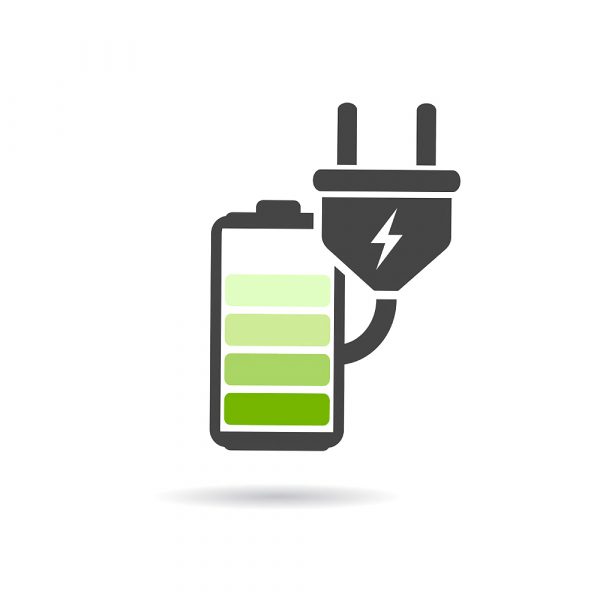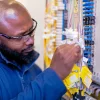UK Broadband and Mobile Providers Balk at Ofcom’s Call for Battery Backup

The UK telecoms regulator, Ofcom, has published some of the responses they’ve received from fixed broadband ISPs and mobile operators to their consultation on enhancing network resilience in order to “reduce the risk of network outages“ (here). Suffice to say that many operators are balking at the costs of deploying national battery backup.
At present Communications Providers (CSPs) already have a legal obligation to identify, prepare for and reduce the risk of anything that compromises the availability, performance or functionality of their network or service. But network outages still occur and Ofcom has previously warned that the consequences of these are “likely to become more severe as society becomes increasingly dependent on them to function.”
One of the most interesting and contentious aspects of this has been the regulator’s pursuit of greater battery backup for both fixed line and mobile networks. For example, their consultation asks questions about the feasibility of mobile operators installing a minimum 1 hour of battery backup on Radio Access Network (RAN) sites.
Advertisement
Currently, the amount of battery backup across the mobile RAN varies by operator (EE, O2, Vodafone and Three UK), in terms of both the proportion of cell sites that are backed up and for how long. But the impact of recent winter storms and the migration away from traditional landline phones helps to underline that consumers are placing greater importance upon the dependability of their mobile phones, such as for emergency calls.
In addition, Ofcom suggests that having a 4-hour power backup in active cabinets on fixed line broadband networks would be an “appropriate level” because this is currently said to be a “typical practice when installing new active cabinets to support technologies such as Fibre-to-the-Premises” (FTTP). Some network operators do indeed do this, but others do not or deploy a lower level of battery backup.
However, the biggest obstacle here is likely to be cost, particularly for mobile operators. Ofcom’s illustrative example suggests that to install a minimum 1 hour of battery power backup on RAN sites, where power backup is likely to be feasible, could cost in the region of £0.9 – £1.8bn (this would end up being passed on to consumers as higher prices). Due to this the regulator doesn’t consider it “proportionate” to include such a measure in their future guidance “at this stage“, but they do seem to be moving in that direction.
Suffice to say that the publication of the first official responses to this consultation have helped to set out the different viewpoints. Naturally we’ve summarised a few of those below, which mostly focuses upon the issue of battery backup as the wider aspects of network resilience are trickier to reflect without a much longer and more laborious article.
Advertisement
BT’s Response
BT highlights how it is “difficult to understand what benefit to citizens or consumers would derive from 1hr battery back-up in urban locations given the majority of these outages cover a single sites, there is cell site overlap resilience alongside Distribution Network Owners (DNO’s) resilience, which means a security compromise is unlikely to occur.”
The provider naturally agrees with Ofcom that the “cost of ubiquitous battery back-up would be ‘disproportionate’ for operators to bear alone“, but they remain “concerned, however, that the suggestion of widespread deployment of non-mains power back-up across the entire mobile estate will go well beyond the intent of section 105A of the Communications Act.” BT also sets out some of the measures they’ve adopted to help with resilience.
The key measures deployed by BT’s mobile RAN include:
• Overlapping cell site coverage;
• Deployment of targeted non-mains power back-up to appropriate [“high risk”] sites;
• Use of ‘roving’ engineering teams and equipment to provide power back-up where needed;
• Development of new tools and processes to enhance coordination with energy companies;
• Availability of limited national roaming to allow continued emergency access where coverage allows.
Cellnex UK’s Response
Cellnex, which is perhaps more focused on the infrastructure delivery than service side, took a more optimistic view and highlighted how battery backup is a solution already used in mobile networks and improvements in battery technology “makes this solution more compelling for wider deployment“. The company noted that batteries are “relatively easy to install“, can be recharged directly from the mains and have lower maintenance than diesel generators.
Cellnex also pointed out that one way to partially off-set the costs of deploying greater battery backup would be to help cut energy costs. “Batteries could be charged at night when power demand is low and per kWh pricing is lower and then utilised during peak power demand to reduce consumption costs,” said the company. “Another optimisation could be to deploy solar panels alongside the batteries” to help reduce peak power load and bring down costs. But that’s not always viable with the limited space available at mobile sites.
Advertisement
Cellnex example
For example an MNO site consuming 6 kW of power could save c.£870 per annum if 2 hours of peak power consumption per day can be supplied with batteries recharged at night when power costs are lower. Over a 15 year term the NPV of this saving would be c.£10,000 which would offset part of the cost of installing a battery back-up solution. The economics of the savings versus cost to deploy requires further investigation and more detailed financial modelling.
However, they also warned that a “significant challenge in cellular networks is battery theft, especially from remote cell sites“, which they said meant there would be “additional costs to provide adequate security and insurance to protect these assets.” Various other operators raised the same concern and we’d agree that this could be a big issue, especially with the size of units likely to be needed for such a task.
Mobile UK’s Response
The mobile trade association noted how the UK’s power networks “are generally very reliable”, before highlighting a report from Ofgem, which noted that the average ‘customer minutes lost’ (CML) across the UK was 32 minutes in 2022 (down from 39 minutes in 2015) – a tiny fraction of overall usage. “It follows that operators’ scarce capital resources would be very much better targeted on customer known priorities such as reducing congestion (including investing in 5G), extending coverage and improving security,” said Mobile UK.
Three UK’s Response
Naturally, Three UK felt as if mobile operators “should not be required” to utilise battery backup at the RAN Cell Site level in order to mitigate against short term power-related incidents because:
(i) Distribution Network Operators (DNOs) are already providing high levels of availability.
(ii) The cost to deliver and maintain battery backup at RAN Cell Sites is prohibitive.
(iii) Short-term power outages are de-minimis in comparison to the overall network availability and any other outages due to planned activity.
Meanwhile, in areas of high customer density, where the impact of short-term power loss is most felt, they echoed BT by saying that “there is overlapping coverage from adjacent sites” and “thus a loss of power at one cell site does not necessarily imply a total loss of service.” Three UK suggested that it would be better to improve resilience by focusing any power backup on critical “Hub Sites” and at “pre-Aggregation nodes” (Exchanges).
Virgin Media and O2’s Response
VMO2 actually submitted two responses to different parts of the consultation, albeit with a fair bit of cross-over. For example, Virgin Media said they “do not believe that introducing a blanket requirement for a minimum of 4-hour battery backup for all active street cabinets is appropriate or proportionate.”
VMO2 added that they felt battery backup at the access layer (fixed and mobile) ought to be considered holistically as part of a wider cross sector consultation on power resilience before implementing any minimum requirement for active cabinets. The operator also highlighted a problem with the hard suggestion of a 4-hour backup.
VMO2 Statement
Best practice for new fibre networks is to build with battery backup at the OLT. However, as currently worded, even new full fibre networks may have to replace batteries recently installed, as they have generally been architected to meet 3-4 hours in typical use as published by the supplier.
Requiring newly built networks to replace batteries which have approximately 3-4 hours battery backup because they do not have a minimum of 4 hours battery backup would not in our view be appropriate or proportionate given the cost of this exercise compared with the minimal additional benefit to customers.
The operator also added that battery life is affected by temperature, use and will deteriorate over time. At some point batteries will need to be replaced. By specifying a minimum battery backup in the Guidance, “the implication is that CSPs would be expected to replace batteries as soon as they offered less than 4-hour minimum backup. We are not clear how we would be able to determine this, and even if we could, replacement at this point would be costly, environmentally wasteful and, we believe, disproportionate.”
Finally, O2 suggested that Ofcom still seemed “minded to require a minimum of 1-hour battery backup for all cell sites” (i.e. whether now or in the future), and they “do not agree that this measure is appropriate or proportionate.”
Vodafone’s Response
Vodafone said that the primary responsibility for ensuring the reliability of the electricity grid rests with licensed Distribution Network Operators (DNOs), which they felt meant that the “single most effective step” to improve the reliability of the UK’s mobile and fixed line networks is to “better assure the power grid, making it more robust and better able to withstand weather events, while simultaneously improving processes to prioritise mobile sites for restoration should power be lost.”
The operator added that it would be particularly difficult (maybe even impractical) to add battery backup to sites that exist in “exposed, elevated locations” (i.e. many remote rural areas), which are much more “vulnerable to the impact of bad weather“. Vodafone suggested that “at a practical level, this restricts the ability of mobile networks to act as a network of last resort, with the fixed network often better placed to perform this role.” The latter argument is of course debatable.
Vodafone also noted, correctly, that there needed to be some “recognition that longer outages, such as those experience with storm Arwen, are unlikely to benefit from MNO battery investment“, which is because such outages are often much more protracted (lasting days or even weeks) and, in these situations, tactical emergency generator deployment can be used (although we do see examples where this doesn’t happen or is slow to occur).
Vodafone Statement
It may not be possible nor sensible to power all sites for 1 hour due to the costs involved. The expenditure required might not be justified, particularly when improvements in the reliability of the energy grid, the use of priority restoration processes, more extensive use of fixed network BBUs, the introduction of direct to device satellite technology in the medium term and environmental considerations around large-scale battery deployment are all fully taken into account.
Ofcom’s July 2023 impact assessment guidelines require all these issues to be fully quantified and considered before any decisions are taken. The question of funding must also be addressed upfront to ensure no unfunded obligations are placed on the UK mobile sector. Without this, investment in 5G, coverage and capacity are all at risk.
INCA’s Response
Finally, INCA, which represents alternative broadband networks (often of the fixed line variety), warned that “mandating four hours of back-up” (active cabinets) for smaller operators “is considered excessive and would result in not just the installation of larger batteries but wholesale change of cabinets as many are not large enough to accommodate batteries of that size. Individual INCA members have quoted costs between several £100ks and several £1ms.”
INCA Statement
This level of incremental cost, being imposed after networks have been built and investment cases signed off based on a different level of battery back-up in cabinets, is not feasible for a number of Altnets and is potentially fatal to their ongoing viability. This would have the adverse effect of slowing down full-fibre deployment and reducing competition and consumer choice.
In addition to the initial expenditure, the costs of ongoing maintenance of such infrastructure must be taken into account, including the replacement of battery packs. A battery pack would typically last for a few years, but batteries start to degrade towards the end of their lifespan. Monitoring of remaining battery capacity would become a reoccurring expense which is again not in the network operator budgets.
The full range of responses from different network operators and interested parties can be seen below, although it’s clear that there would be many issues of cost, security and maintenance / durability / replacement to consider in some of the battery related questions that Ofcom are currently exploring.
On the other hand, it doesn’t look as if the regulator will be taking a hard line on things this time around (i.e. not imposing a national requirement for all sites) and some organisations, such as Cellnex UK, have highlighted how harnessing battery backup as a way of reducing peak-time energy costs / usage could potentially offset some of the economic challenges. But Ofcom might well propose something more targeted, at least to start with.
Responses to Ofcom’s Consultation on Resilience Guidance
https://www.ofcom.org.uk/internet-based-services/network-security/resilience-guidance/
Mark is a professional technology writer, IT consultant and computer engineer from Dorset (England), he also founded ISPreview in 1999 and enjoys analysing the latest telecoms and broadband developments. Find me on X (Twitter), Mastodon, Facebook, BlueSky, Threads.net and Linkedin.
« World Broadband Lines Top 1.45bn as UK Full Fibre Grows 7.2% in Q1 2024





















































The problem with the load-shifting approach Cellex have suggested, is you reduce your overall capacity for when it’s actually needed. E.g. charging whilst cheap then running all day on battery, and an outage just prior to charging again will lead to a very short window. (So you end up overprovisioning capacity) – or you end up only being able to use only a small amount of that battery capacity during the day to protect the runtime during an outage. Battery tech in LifePO4s for example will happily charge and discharge without needing to be replaced too often though (5000+ charge cycles).
Batteries will age and then become less able to hold a decent charge, so that window will continue to deminish. (So again, you need to overprovision capacity a bit more)
Load shifting is pretty easy as a Consumer, but if you start looking at business energy rates – they’re both significant and don’t usually come with an off-peak pricing. For a business that needs to run an asset 24/7 the higher “day” unit would likely minimise the benefit too.
I like the idea, I just feel like once they hash it out, it doesn’t actually help that much.
I feel like it makes more sense for the DNO to own redundant power to “hub” sites – they already do this for businesses who depend on power where you can have diverse/redundant power feeds (e.g. manufacturing), it feels like they’d be better off engaging with the energy regulator (… !!) and the DNOs to see what their thoughts are if they are provided with example hub sites.
Hopefully most of the ‘core’ hub sites (e.g. BT handover pops) are all close to substations or power infrastructure and they have capacity to own it.
(I’m thinking like these “containers” full of batteries the DNO can use for resilience for the whole area, but then have infrastructure providers have priority. (As both the DNO and emergency services will rely on the mobile networks being available). Means the Providers don’t have to own and manage lots of small sites, and the DNO can charge/discharge at will, giving coverage for bursts of power usage (e.g. everyone flipping the kettle on at half time in sports, etc.)
To think we moved away from copper wire based phones where exchanges had considerable battery storage (lead-acid) and generators!
Emergency Power Supplies
It is essential that telecommunication equipment continues to operate should an emergency or war situation cause the loss of the public electricity supply. During the cold war period all telephone exchanges had a battery reserve but only those in larger towns and in cities possessed a standby generator.
http://www.ringbell.co.uk/ukwmo/Page240.htm
Continued operation in emergency is essential – not optional.
I guess some of us have direct-to-satellite access – albeit only minimal as standard on things like latest generation Apple iPhones.
re: INCA’s whining about cost
This perhaps separates the big boys from the amateurs. Openreach have sometimes been criticised for their network design, and of course their higher price compared to the cherry pickers, but it seems the idea of using as few remote OLTs as possible was a masterstroke. The exchanges already have as much power resiliency as is realistically feasible and it’s just a matter of sending out UPSes to vulnerable customers.
If even the idea of monitoring some batteries would send the altnets over the edge, why do we pretend they even have to exist? lol
You get what you pay for…
It is not all Altnets. It is interesting if you read some of the responses on Ofcom’s website…
Providers who have mainly gone for OLTs in buildings with backup generators don’t seem upset by the 4hour battery requirement e.g. Openreach and CityFibre. CityFibre have long stated their preference for their own exchanges over street cabs.
Providers who have gone for OLTs in street cabinets seem to be the ones who are upset e.g. smaller operators via INCA and VMO2. In the VMO2 case both project Mustang and Nexfibre have OLTs in street cabinets with little power resilience.
Or put simply those who have gone for low cost street deployments are now worried these requirements will break their business models.
Indeed the INCA sounds like “We don’t have that many customers, so to provide them with resilience would be a disproportionate cost. If someone can’t contact their electricity supplier to tell them they have a power outage, then they’ll not make much front page news so it will be easy to hide” (Until they die because their dialysis machine stopped and they couldn’t summon help……)
Most domestic UPS’s are only designed for a 1 hour operation, so even if a FTTP network had a 4 hour battery backup most customers will have shut down after an hour.
It’s an interesting question — what happens in the event of a power outage? While I don’t disagree that the grid _should_ be reliable, fundamentally we’re planning for unexpected events (e.g. when there was a fault at Goddards Green substation taking large parts of Mid Sussex offline for several hours: https://www.standard.co.uk/news/tech/power-cuts-sussex-london-mobile-phones-burgess-hill-b1067548.html).
Today people with PSTN lines will still be able to use them to place phone calls (as telephone exchanges have UPS systems and generators) — but as we move to a world where people use AltNets as opposed to Openreach based networks, the AltNets need to improve their resiliency to comply with GC A3.2.
Great idea, but what ever solution is chosen, it’ll be us end users/consumers that ultimately pay for the equipment.
I disagree with Vodafone’ s assertion that fixed line broadband is better placed to serve during an outage. With the move to FTTP, this requires that every consumer needs a battery backup supply for the CPE, unlike mobile devices that have a battery built in. Furthermore, if there are for the sake of argument, 3 operators serving an area but only 1 mobile mast is in service, then all mobile phones will be able to make an emergency call regardless of their home network.
an emergency call may not be a call to 999 however. it may be a telecare device calling into a response centre. it may be someone calling a friend or relative for help.
in a large scale incident that single cell site may not be enough to handle all demand. the emergency services can get priority of course but as for the rest?
so in that context, a UPS at home is perhaps a more robust approach (provided your chosen network operator is doing their bit too)
I do think the operators should make sure there is a certain degree of resiliency at their sites so some degree of service can be provided during a power outage. This is especially important in rural areas where, in my experience, they happen much more frequently.
I used to live somewhere which had almost no signal during a power outage so the only other way of communicating with the outside was my amateur radio kit and/or a drive over the hill to the next cell tower!
Can’t help but think we have solar powered battery things now, and also the fact you can literally get power through fibre as well.
Surely this would help to bring the costs down if implemented?
How can you get ‘power through fibre’?
Last time someone said this, I did “a research”. Turns out there is a product, or something in development, I forget which, but needless to say it is/would be ridiculously expensive, and would of course require complete OLT line card and CPE replacement.
Ain’t gonna happen for decades, if at all.
Openreach wants everyone to go over the FTTP, and link their home phones to routers, so if there is a power cut, bang goes the phone. I know a lot of people have DECT phones, so they would not work anyway, but when I had a landline, I used to keep a phone connected that did not need power. While broadband may be more reliable these days, I would not want to rely on a phone connected to it in an emergency.
Mobile phones are okay, but do need some sort of backup if the power goes off, but saying that, I don’t think I have suffered from no signal for a couple of years, low signal yes, but not no signal, but then I live in the centre of the city. Not so sure if that reliability will stay now 3G have gone.
Amazing that some people on here want the downfall of Altnets, Openreach and BT would love that, no competition, they would be able to charge what they like, or maybe Ofcom will have more restrictions over them.
For one, I actually agree with the ISP’s here, do you know how much this would cost? for no real benefit to the consumer
In a day and age where phones (new-ish ones at least) can connect to a satellite in case of emergency, where the mobile masts go down and there’s no wifi. I fail to see how this would help
We need to name and shame the operators without 4 hours OLT coverage. The suggestion of a million pounds is frankly laughable. For example a 1kw ups for an outdoor cabinet that could last 4 hours might cost 3-5K. That 1kw cabinet should be able to serve a 4000 homes using xgspon
Perhaps the mobile network and FTTC/P providers could minimise their costs by clubbing together to send each if their older customers (say 65+) a free body bag. Then in the event of an outage the resident could place themselves in the bag to simplify matters for the emergency services. (Queue Month Python sketch involving “bring out your dead”.
Seriously though the push to Fttp and/or mobile phones, with little or no power resilience from the customer to the exchange (where that still exists) seems akin to the governments attitude to the vulnerable during COVID 2020. A convenient winnowing of the herd. Plus the emergency services are now dependant on the mobile grid as well.
While the UK power grid is currently much more resilient than many countries, we’re moving rapidly to a model where in a locality the customer, the network and the emergency services all lose coverage at once. In olden times you’d lose gas/heat, or electricty/light or communications. In the future we’ll lose all three at once. Brilliant.
Much of the debate is about urban services but rural is different.
We have a single cell tower that we can connect to and overhead power lines where outages occur several times a year and are rarely less than one hour. 3 to 4 hours ould be the most common.
I don’t think that this is a problem where one solution fits all circumstances. Rural services definitely need more back up.
For the vast majority of sites, the solution is simple. Tap into the gas network and have a backup natural gas fueled generator. The chances of both the electrical network and the gas network being out at the same time is very remote. Problem is largely solved as being fed from the gas network you don’t have to refuel them so you can cope with extended outages no problem. It is going to be decades before the gas network is retired so it pushes the problem down the road sufficiently far as to be a reasonable solution.
Mains gas does not reach as far into rural areas as you think it does.
OFCOM’s starting to panic due to upcoming frequent power cuts we will be seeing in the not too distant future.
The costs for this “Battery Backup” will be passed onto customers anyway.
hmm, we had reliable copper phones, we than had OPTIONAL mobile, we then had the internet (mainly on copper), then we had OPTIONAL internet over fibre, then some bright sparks thinks ooo we can voice over fibre but that won’t be optional, ooer what do we do about emergency calls (not a problem on ‘old’ copper) but now with non optional voip we’ve buggered emergency calls. Tell you what, consumers can pay (indirectly) for attempts to make non emergency capable fibre voice sort of emergency capable, note fftp is stil OPTIONAL as is having a mobile (until you have to chipped at birth with monthly charges, moneytising ‘birth’ with a continual revenue stream, and tracking…).
If a private co. caused a death through to non availability of ’emergency’ connectivity – that might be corporate manslaughter, if not murder, for failng (negligently) to cover easilly foreseen situations ? Even with a paltry 1hr backup, tough if you have a embolism, stroke or heart attack 61 minutes in.
Damn, not having a mobile, or in coverage (or flat and needing a charge..) I now can’t deliver my responsibilties to report crimes, terrorism, rape, fire anon, but hey ho this is what the government want or proles to have to take on additional monthly costs ( and tax revenue) stream, because we broke what was in place, even if negligently maintained over years.
Seems like resillient comms should be a national infrastructue for the benifit of all, upss all over the place fibre or mobiles to all homes in case of those life threatening situations and responsibilities?
Oh and this is from ofcom, the body responsible for communications, electronic or otherwise – but NOT email – incredible, who’d have thought (over the 20 years) that email isnt a communication medium that should require some governance (and privacy), by an ‘organisation’ working for the protection of consumers…